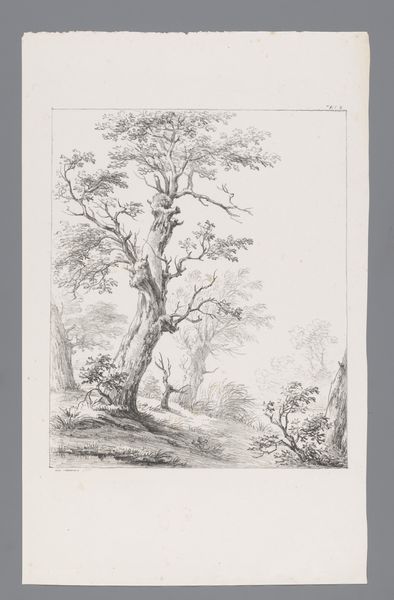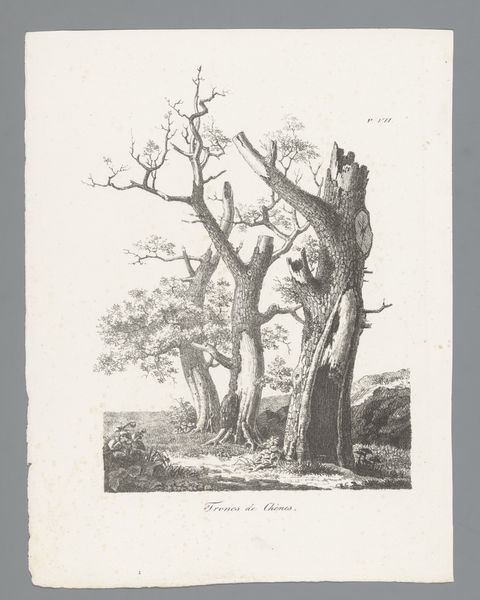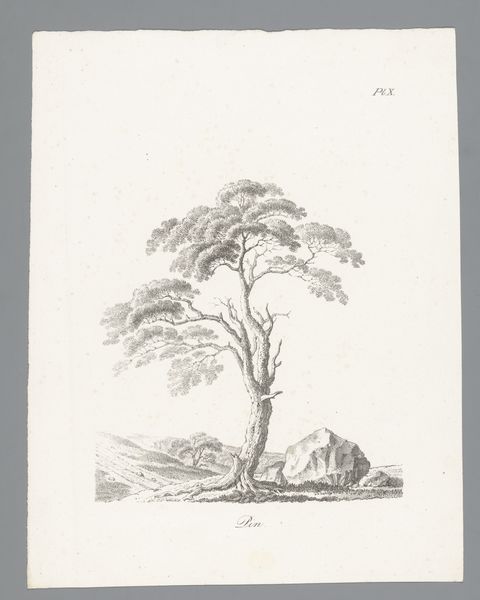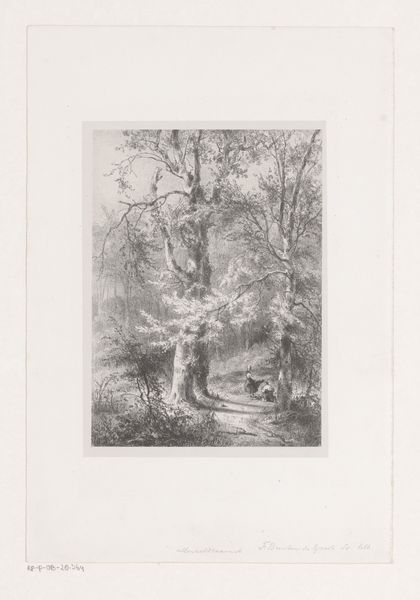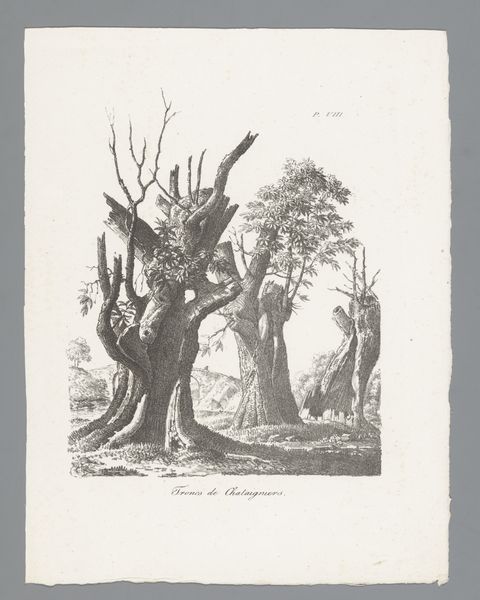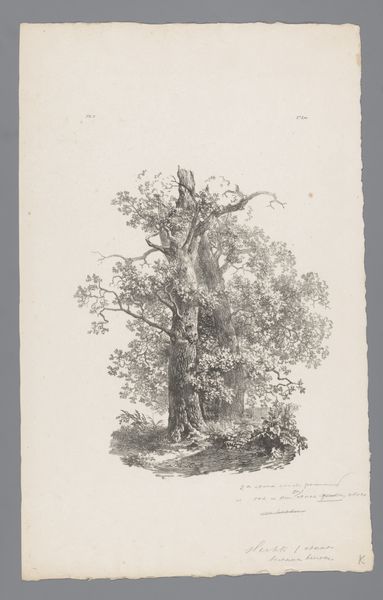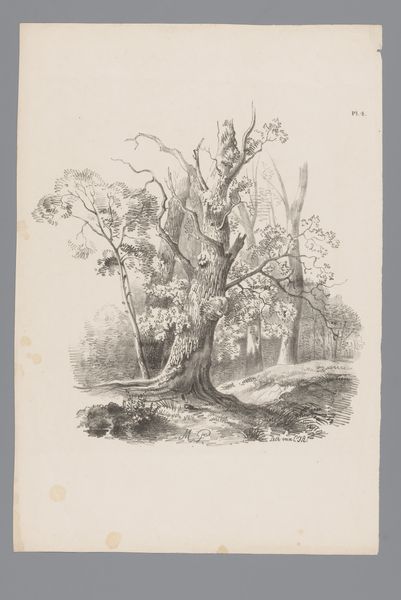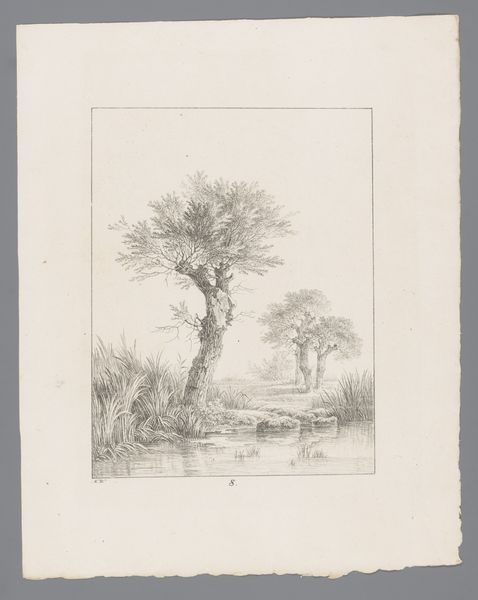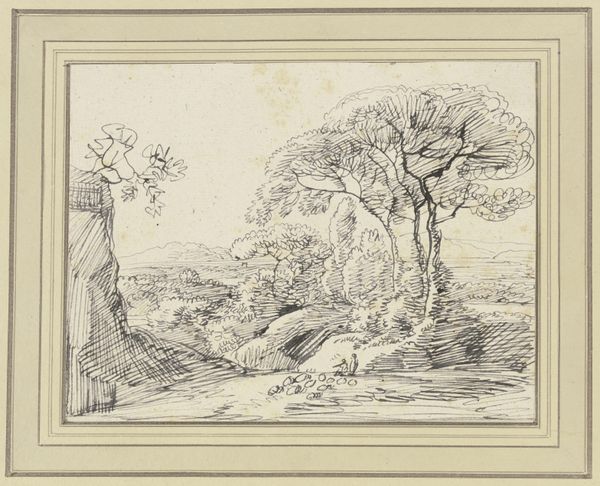
drawing, pencil
#
drawing
#
landscape
#
romanticism
#
pencil
#
line
#
realism
Dimensions: height 430 mm, width 265 mm
Copyright: Rijks Museum: Open Domain
Curator: Let’s turn our attention to a compelling pencil drawing from the period of 1809 to 1840 titled, "Boom met daarachter een laag hek," or "Tree with a Low Fence Behind it," by Carel Lodewijk Hansen, now housed here at the Rijksmuseum. Editor: Immediately, I'm struck by the solitude of the scene. The starkness of the pencil against the paper and the skeletal branches reaching into the sky create a somber, almost desolate atmosphere. Curator: The artist's careful use of line certainly emphasizes the tree’s silhouette. It becomes an almost anthropomorphic figure; that bending posture suggests both resilience and vulnerability. Tree as symbol has so much cultural memory attached to it! Editor: Absolutely. Given the Romantic period in which Hansen worked, I wonder how much this depiction is about more than just observing nature. The fence, for example, becomes symbolic. Is it dividing or protecting? Implying ownership or exclusion? Who is shut out, and from what? Curator: That barrier presents multiple readings, as a liminal space—suggesting a threshold to somewhere, or someone. Consider how lines around the tree are dark and deeply defined and how this contributes to it emerging almost defiantly out of the ground. I see it echoing classical Romantic themes around nature as a redemptive force. Editor: And yet, the subdued tone of the piece pushes me away from easy interpretations of nature’s inherent goodness. I can’t ignore the possible class implications here either, land ownership being far from equitably distributed at this time. A seemingly benign scene such as this also becomes coded as a certain power relationship. Curator: The work holds a tension, visually and conceptually. Even Hansen's dedication to a 'realistic' landscape belies the loaded meaning behind it. His decision to use only pencil to convey so much says to me something of the era’s desire to confront and distill human experience to its elemental forms. Editor: Agreed. It invites us to reflect on the different layers within seemingly simple imagery. There's much to uncover in how social, political, and personal contexts converge.
Comments
No comments
Be the first to comment and join the conversation on the ultimate creative platform.

